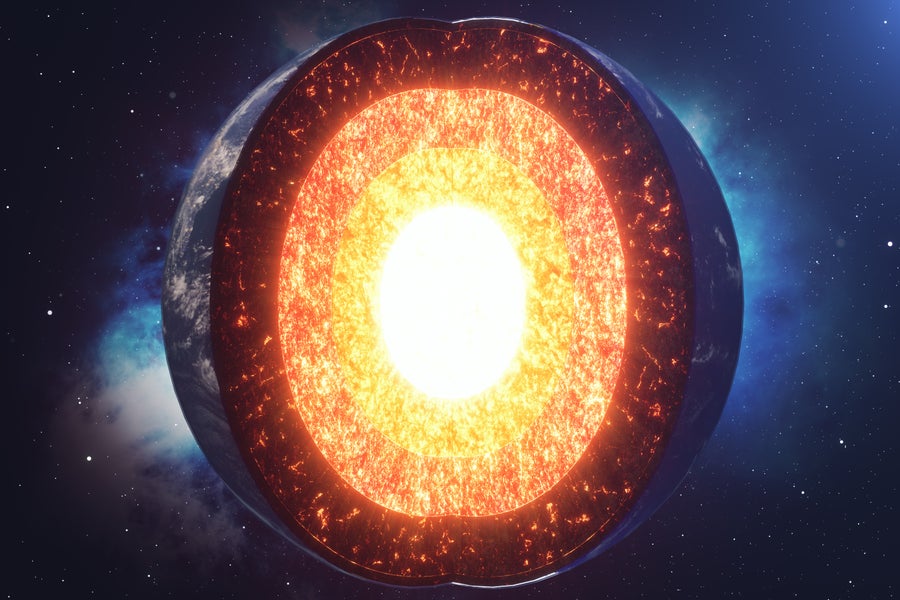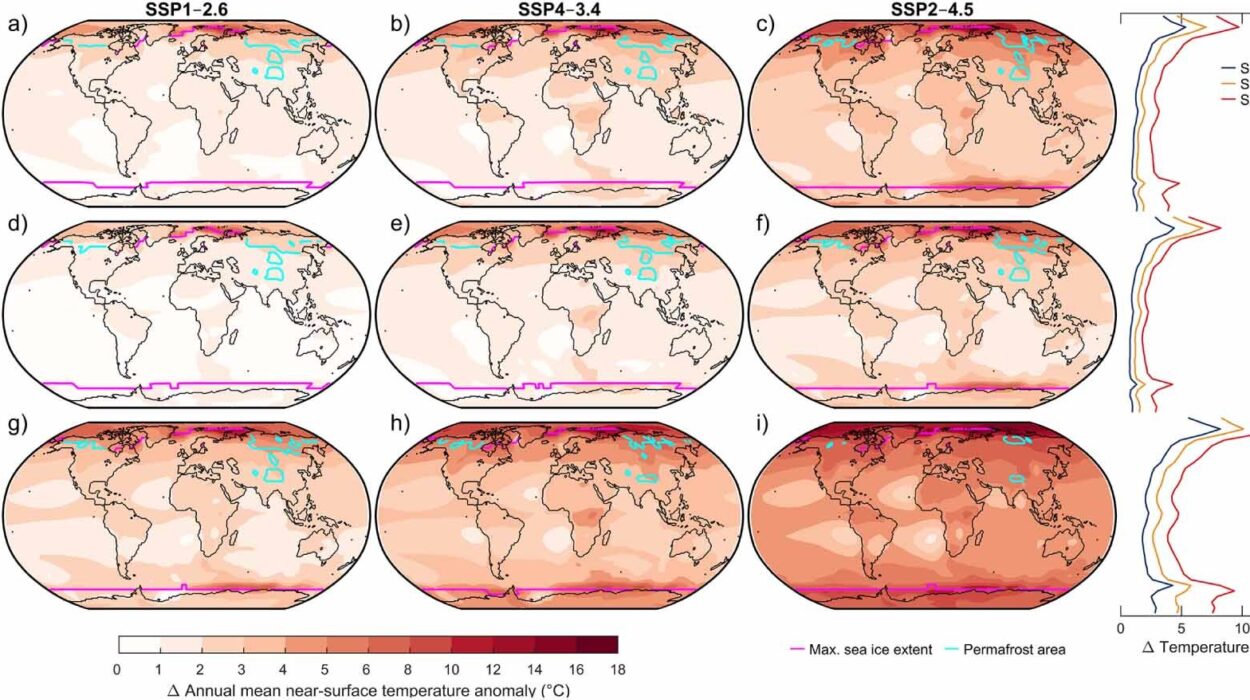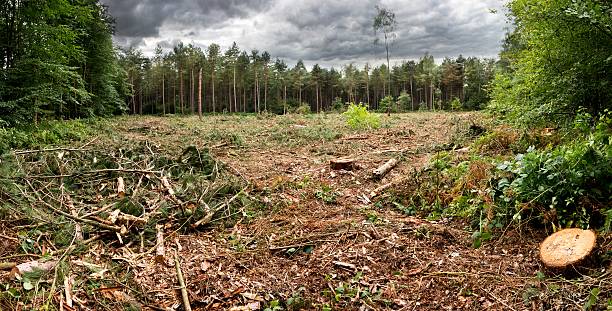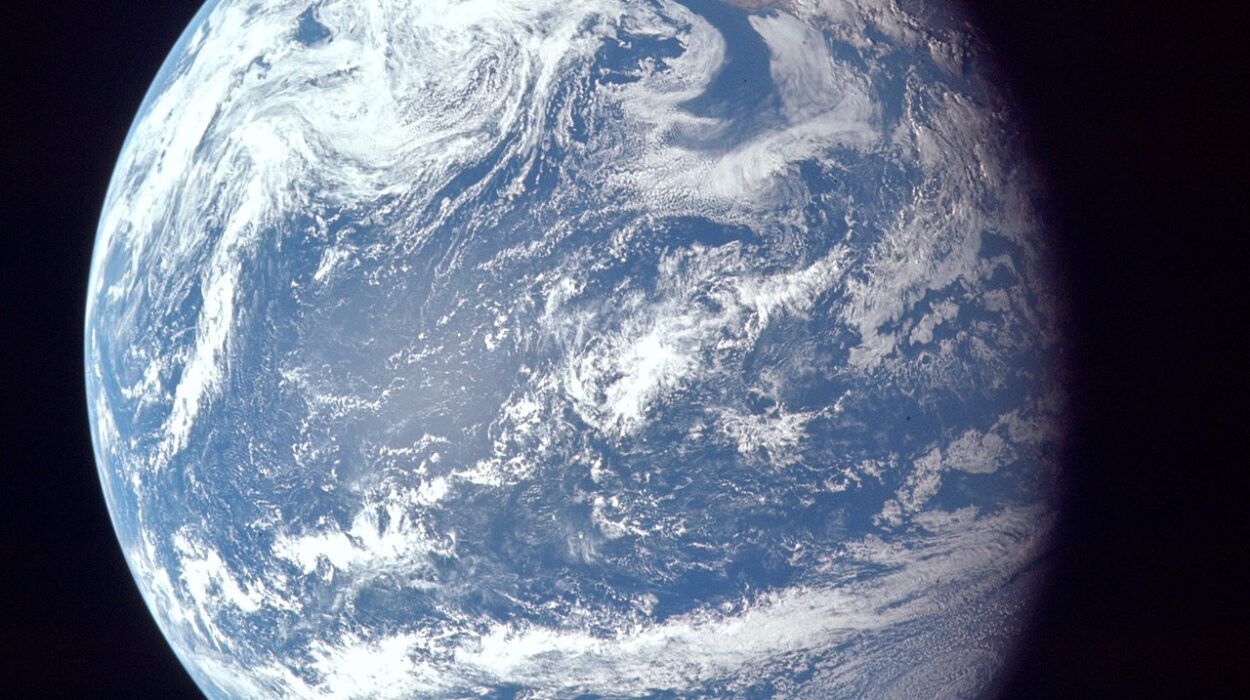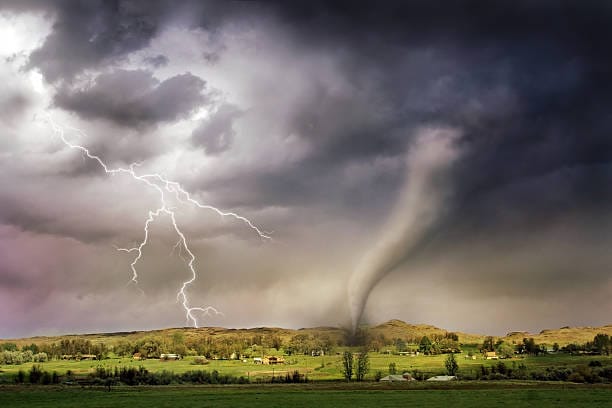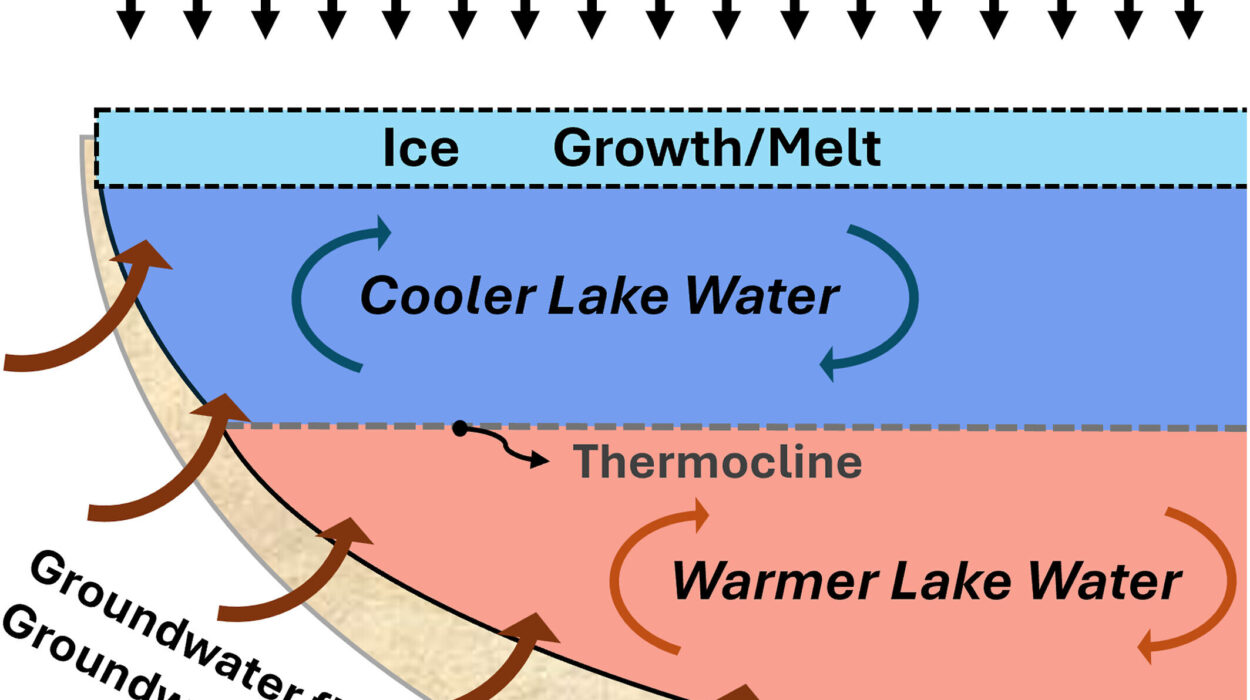Beneath the surface of our familiar world—beyond the mountains, oceans, forests, and cities—lies a place that no human being has ever seen, touched, or directly measured. It is a realm of extremes, of crushing pressures and searing heat, where the rules of physics and chemistry stretch to their limits. This hidden domain is the Earth’s core. Mysterious, enigmatic, and powerful, it is the engine that drives our planet’s magnetic field, helps sculpt its surface through plate tectonics, and whispers clues about Earth’s origin story.
For centuries, humans have looked to the heavens in wonder, building telescopes to peer into the stars. But the greater mystery—the one right beneath our feet—has proven far more elusive. What lies at the center of our planet? What secrets swirl in that impenetrable darkness, over 6,000 kilometers below us? This is the story of the Earth’s core—a tale of fire, iron, and ingenuity.
The Journey Begins: From Surface to Center
To appreciate the marvel that is Earth’s core, one must first understand the layered architecture of our planet. The Earth isn’t a solid rock throughout; it’s more like a cosmic onion, made up of concentric layers, each with distinct properties and compositions.
We live on the crust, a thin, brittle shell that floats atop a vast sea of molten and semi-molten rock. Beneath the crust lies the mantle, a region that extends about 2,900 kilometers down and comprises nearly 84% of Earth’s volume. While parts of the upper mantle are partially molten and flow over geologic time, much of it behaves like solid rock under immense pressure.
Deeper still, below the mantle-mantle boundary, lies the outer core—a fluid ocean of molten metals. And nestled at the very heart of it all, some 3,200 miles (5,150 kilometers) beneath our feet, is the solid inner core, a sphere of iron and nickel so hot it should be liquid, yet remains solid because of the intense pressure squeezing it from all sides.
But how do we know all this if no human or machine has ever drilled more than 12 kilometers into the Earth? The answer lies in waves—in the subtle trembling of the planet during earthquakes.
Earthquakes: Nature’s X-Rays
The first window into Earth’s interior came not from digging but from listening. Seismology, the study of seismic waves generated by earthquakes, has been our greatest tool in peering inside the Earth.
When an earthquake occurs, it sends shockwaves through the planet. These waves, known as primary (P) and secondary (S) waves, travel at different speeds and take different paths depending on the materials they encounter. P-waves, which compress and expand like sound waves, can move through solids, liquids, and gases. S-waves, on the other hand, travel only through solids. When S-waves abruptly disappear at a certain depth and P-waves suddenly slow or bend, scientists know they’ve entered a new layer—something distinct and different.
By mapping the behavior of seismic waves from thousands of earthquakes and tracking how they reflect, refract, and vanish within the Earth, geophysicists have drawn a surprisingly detailed picture of our planet’s interior. This technique, akin to performing a CAT scan on a planet, has revealed the size, composition, and state of each layer. And what it shows us about the core is nothing short of extraordinary.
The Outer Core: A Roiling Sea of Metal
Beginning at about 2,900 kilometers beneath the surface and extending down to around 5,150 kilometers, the outer core is a molten, metallic ocean composed primarily of iron and nickel, mixed with lighter elements like sulfur and oxygen. Temperatures here range from 4,000 to 6,000 degrees Celsius—hotter than the surface of the Sun.
The outer core is in constant, convective motion. Vast streams of molten metal churn and flow due to the heat rising from the inner core and the rotation of the Earth. This movement generates electric currents, which in turn create the Earth’s magnetic field through a process known as the geodynamo.
Without this magnetic shield, life on Earth would be very different—if it existed at all. The magnetic field protects us from the Sun’s harmful solar wind, a stream of charged particles that would otherwise strip away our atmosphere over millions of years. Auroras, the stunning light shows near the poles, are visible traces of this invisible shield at work.
The outer core is also dynamic and unpredictable. As it flows, it causes the magnetic field to shift and change. Magnetic north isn’t fixed—it drifts, reverses, and fluctuates over time, all because of the chaotic ballet occurring deep within the Earth’s heart.
The Inner Core: Solid in a Sea of Fire
At the very center of our planet lies the inner core—a solid sphere about 1,220 kilometers in radius, roughly the size of the Moon. This metallic heart is composed mainly of iron, with some nickel and perhaps lighter elements alloyed in.
But how can it be solid when temperatures here reach an estimated 5,400 degrees Celsius? The answer lies in pressure. The weight of the entire planet bearing down on this core is so immense—over 3.6 million times atmospheric pressure—that it forces the iron atoms into a crystalline structure, freezing them into solidity despite the heat.
The inner core is not static. Recent research suggests that it may rotate at a slightly different speed than the rest of the planet, a phenomenon known as differential rotation. Even more intriguing, seismic studies have revealed that the inner core may not be uniform; it appears to have an “inner-inner” core, with different crystalline alignments in its center. This raises compelling questions: Is this a fossil remnant from the very earliest days of Earth’s formation? Could it contain secrets about the planet’s birth, or even the early solar system?
How the Core Came to Be
The formation of Earth’s core dates back over 4.5 billion years to the chaotic birth of our planet. In the early solar system, swirling clouds of dust and gas condensed into rocky planets through a process of accretion. As Earth grew larger, gravitational energy, radioactive decay, and frequent impacts—including one from a Mars-sized body that likely formed the Moon—melted the planet from the inside.
This period, known as the Hadean Eon, saw heavy elements like iron and nickel sink toward the center, forming the core, while lighter silicates floated upward to form the mantle and crust. This differentiation shaped the layered Earth we know today and set the stage for all subsequent geological and biological evolution.
The core, then, is not just a curiosity—it is a record of Earth’s most violent, formative years. Its existence underpins everything from plate tectonics to magnetic fields to the very stability of our climate.
Can We Ever Reach the Core?
Despite our knowledge, the Earth’s core remains frustratingly out of reach. The deepest humans have ever drilled is the Kola Superdeep Borehole in Russia, which reached a depth of 12.2 kilometers—just a fraction of the way through the crust. Temperatures and pressures increase so dramatically with depth that conventional drilling becomes impossible.
To physically reach the core would require technology far beyond our current capabilities. The crushing pressures and infernal heat would destroy any known material long before it got close.
So, scientists turn to indirect methods—analyzing seismic waves, running computer models, and simulating high-pressure conditions in laboratory experiments using diamond anvil cells and lasers. These techniques allow researchers to study how iron and other core materials behave under extreme conditions, offering insights into the nature of the inner Earth.
The Core and Life on Earth
It’s easy to think of the core as distant and irrelevant to everyday life. After all, it’s buried thousands of kilometers below us. But this couldn’t be further from the truth.
The core’s magnetic field makes our technology work—power grids, satellite communication, and GPS systems all depend on it. It protects life from deadly solar radiation and helps animals navigate during migration. The convective heat from the core drives mantle plumes and tectonic activity, leading to the formation of continents, mountains, and oceans. Without the core, Earth would be a dead, frozen rock adrift in space.
Even climate, indirectly, owes much to the churning metallic furnace below. Volcanoes—powered by the Earth’s internal heat—release gases that have helped regulate the atmosphere for billions of years, maintaining temperatures conducive to life.
The Core in Cultural Imagination
The mystery of the Earth’s core has long fascinated humanity. In literature and film, it is often depicted as a realm of adventure and danger. Jules Verne’s classic Journey to the Center of the Earth imagined a subterranean world filled with prehistoric creatures and vast caverns. In modern science fiction, the core is sometimes portrayed as a key to saving or destroying the planet.
While these stories stretch scientific credibility, they capture a deeper truth: the allure of the unknown. The core is our inner space—the final frontier not above but below. As long as it remains unreachable, it will continue to fuel our imagination.
Unanswered Questions and Future Frontiers
Despite all we’ve learned, the Earth’s core still holds many secrets. Scientists continue to debate the exact composition of the core, especially what lighter elements are mixed in with iron. The nature of the inner-inner core remains puzzling. And the full dynamics of the geodynamo, though broadly understood, are still being explored in detail.
New technologies may one day offer clearer views. Seismic tomography, improved sensors, and even neutrino detectors could offer more precise maps of Earth’s interior. Laboratory experiments continue to simulate core conditions, and computer models are becoming ever more powerful.
Each discovery peels back another layer of the mystery—but many layers remain.
A World Beneath Our Feet
As we gaze up at the stars and send probes to distant planets, it’s worth remembering that one of the most alien, extreme environments in the known universe lies directly beneath us. The Earth’s core is not just the center of our planet—it is the pulse, the dynamo, the archive of Earth’s memory.
It is a world shaped by fire and forged by time, hidden yet essential, inaccessible yet ever-present. It beats beneath every footstep, whispers through every earthquake, and glows unseen at the center of the only world we call home.
In exploring the Earth’s core, we are not just delving into geology—we are touching the very heart of what it means to live on this planet. What lies beneath is not merely metal and heat, but the story of Earth itself, written in molten iron and eternal pressure.
And that story is still unfolding.
